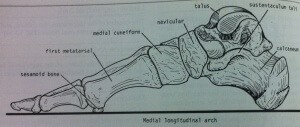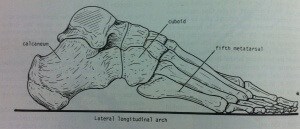DIABETIC FOOT CLINIC


These two pictures show the arches of the feet.
If you examine them, you will notice that the back part of the foot is supported on the heel bone(Calcaneum).
The front part of the foot is supported on the long bones of the midfoot(Called Metatarsals) and the bones of the toes (Called Phalanges).
It would be evident to you that cutting any of these bones would destabilize the foot and lead to problems in the future, with recurrent ulcerations, infections etc.
How do we as doctors deal with this?
One is we try not to amputate. We try to remove the minimum possible in cases of infection or gangrene, with the idea to prevent future complications in the foot. We try to prevent even toe amputations if possible or if it is not possible to salvage the complete toe, then to do a partial toe amputation till the last affected bone.
In those cases where we have to remove a part of the toe/s or foot, then the surgery is conducted in a way so as to try and stabilize the remaining part of the foot, with the aim to prevent future complications. In such cases, customized footwear is given .
Why do we try to SAVE the MAXIMUM POSSIBLE?
This is because once a foot undergoes any degree of amputation, then further amputations and loss of limb is much higher than the non amputated foot.
Less than 1 year after amputation, 15% patients undergo further amputation.
1 – 3 Years after any amputation, about 40% patients undergo further amputation.
Amputation or Recurrent ulcerations have a heavy socioeconomic cost.
The aim of the centre is to reduce amputations and reduce their socio economic costs in the long term.
To know more about Socioeconomic costs of Diabetic Foot CLICK HERE
